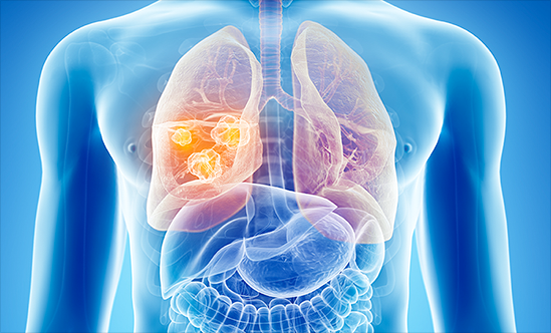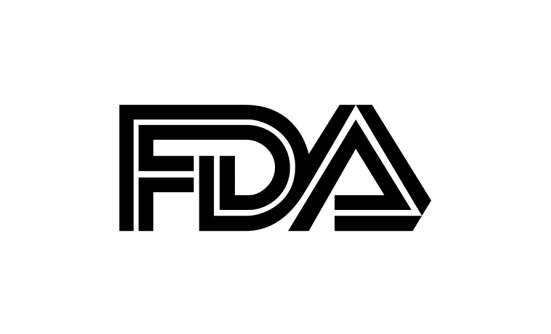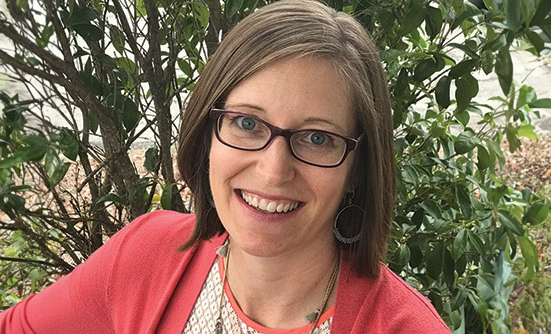Early diagnosis of lung cancer is challenging for everyone, including healthcare providers. Lung cancer is the leading cause of cancer-related deaths, yet only 3.9% of people eligible for screening are actually being screened with the recommended method of low-dose CT,1 which is the only screening method recommended by the US Preventive Services Task Force for lung cancer.2 In this test, an x-ray machine uses low doses of radiation to scan the body and create detailed pictures of the lungs, to detect tumors. This type of testing results in a 20% reduction in lung cancer–specific deaths.3
So why are eligible people shying away from low-dose CT screening? It could be a lack of information, or fear of radiation, suggested Robert J. Caccavale, MD, Chief of Thoracic Surgery, Somerset Medical Center, NJ, Co-Medical Advisor of LungCare Comprehensive Cancer Program at CentraState Medical Center, and Co-Medical Director of the Lung Institute at Steeplechase Cancer Center in Somerset, NJ.
Dr. Caccavale believes that when patients have more information, the fear of radiation is less likely to be a factor. “If patients understood a little better, they might be more aggressive about getting screened, because lung cancer ruins lives,” Dr. Caccavale told CONQUER.
He listed 5 important things that every American should know when considering whether to have a lung cancer screening.
1 People Who Don’t Meet the Criteria Can Still Have Low-Dose CT Screening
The US Task Force only recommends screening to adults aged 55 to 80 years who have a history of smoking (30 pack-year) and who are still smoking or have quit smoking in the past 15 years. However, according to Dr. Caccavale, lung cancer doesn’t affect only people who fall within these criteria; in fact, 15% of new cases of lung cancer occur in “never-smokers” (those who have never smoked).
“That’s a lot of patients. It’s a very big population of people, and I’m not sure they should be exempted from low-dose CT screening,” said Dr. Caccavale.
The American Cancer Society attributes nonsmoker lung cancer to factors such as radon gas exposure, secondhand smoke, and genetic abnormalities (mutations). Each year, 16,000 to 24,000 nonsmoker Americans die from lung cancer, deaths that could be avoided through early detection.4
2 Lung Cancer Cases Detected by Low-Dose CT Far Outweigh the Risk of Radiation
Because the low-dose CT scan uses small amounts of radiation, many patients fear that annual screening may increase their risk for radiation-induced cancer.
A recent study of radiation exposure accumulated after 10 years of yearly low-dose CT screening showed a very low lifetime risk of lung cancer from low-dose CT radiation exposure—an estimated 2 in 10,000 men and 6 in 10,000 women. However, the number of lung cancer diagnoses with the screening was much higher: about 500 lung cancer cases per 10,000 screened people.5
“Although the radiation fear is out there, the increased risk of developing cancer from the screening is not substantial,” Dr. Caccavale said. “There is clearly a one-sided benefit from low-dose CT.”
3 False-Positive Results for Low-Dose CT are reduced with a Multidisciplinary Team
The 2011 National Lung Screening Trial found that about 27% of initial screenings are positive (indicating lung cancer).6 Of those, 96% were found to be false-positive,3 meaning that the results indicated the existence of lung cancer, but that was incorrect.
Dr. Caccavale says that false-positive results are a very real part of any screening process, such as breast or prostate cancer, but they are actually lower for lung cancer.
“False-positives for lung nodules are actually lower than they are for breast mammograms, and that hasn’t made anyone question the utility of that program,” Dr. Caccavale said. “But that’s where experience comes in with a multidisciplinary team.”
According to Dr. Caccavale, the most important part of screening is what happens with the information gained from the CT scans. He suggests that having a multidisciplinary team from different disciplines (including pathology, pulmonary, medical oncology, and radiation oncology) collectively review the test results is the best approach.
“You are using the years of experience of all the professionals who are involved,” Dr. Caccavale said.
4 Annual Screening with Low-Dose CT Offers the Biggest Benefit
Although having any screening with low-dose CT is a positive step for people at high risk for lung cancer, doing this on an annual basis is the most beneficial. The Cancer Intervention and Surveillance Modeling Network used data from 2 separate studies of yearly low-dose CT screening.6 The results showed that annual screening had the greatest reduction in lung cancer deaths (11%-21% reduction) compared with screening every 2 years (6.5%-9.6% reduction). Screening every third year had less than a 6% reduction in lung cancer deaths.6
Dr. Caccavale says that the use of screening has made some impact, and more people are now being diagnosed early, when lung cancer can still be treated successfully.
“We have reaffirmed the effectiveness of this technology and this approach, and we are certainly far more optimistic than we have ever been,” Dr. Caccavale said. “We’re seeing more and more early-stage lung cancers, and the long-term cure rates are far greater the earlier we diagnose the problem.”
5 Paying for Low-Dose CT Screening
After the National Lung Screening Trial revealed the connection between low-dose CT screening and reduced lung cancer deaths, Medicare and other insurance companies began to cover screening for people who meet the screening criteria mentioned before.
In addition, under the Affordable Care Act (ACA), health plans must cover annual check-ups and preventive screenings, including low-dose CT screening for lung cancer as recommended by the US Task Force.7 In fact, a recent study funded by the American Cancer Society and presented at ASCO 2017 annual meeting showed a 1% increase in early diagnosis of lung cancer after the ACA implementation.8
Furthermore, Dr. Caccavale suggests that everyone can have low-dose CT screening, although some may have to pay for it on their own. “There is no reason why someone cannot get an out-of-pocket scan,” he said.
You may wish to verify your coverage for lung cancer screening with your insurance company, or check out the American Lung Association’s explanation of lung cancer screening coverage based on your type of insurance, at www.lung.org/assets/documents/lung-cancer/interactive-library/lung-cancer-screening-implementation.pdf.
References
- Jemal A, Fedewa SA. Lung cancer screening with low-dose computed tomography in the United States—2010 to 2015. JAMA Oncology. 2017 Feb 2. Epub ahead of print.
- U.S. Preventive Services Task Force. Lung Cancer: Screening. Annals of Internal Medicine. 2014;160:330-338. www.uspreventiveservicestaskforce.org/Page/Document/UpdateSummaryFinal/lung-cancer-screening.
- Chiles C. Lung cancer screening with low dose CT. Radiologic Clinics of North America. 2014;52(1):27-46.
- Simon S. Why non-smokers sometimes get lung cancer. American Cancer Society. November 2016. www.cancer.org/latest-news/why-lung-cancer-strikes-nonsmokers.html.
- Rampinelli C, De Marco P, Origgi D, et al. Exposure to low dose computed tomography for lung cancer screening and risk of cancer: secondary analysis of trial data and risk-benefit analysis. BMJ. 2017;356:j347.
- Richards TB, White MC, Caraballo RS. Lung cancer screening with low-dose computed tomography for primary care providers. Primary Care. 2014;41(2):307-330.
- LungCancer.org. Understanding the Affordable Care Act. www.lungcancer.org/find_information/publications/179-understanding_the_affordable_care_act.
- Han X, Lin CC, Jemal A. Changes in stage at diagnosis of screenable cancers after the Affordable Care Act. Journal of Clinical Oncology. 2017(Supp 35):Abstract 6521.














